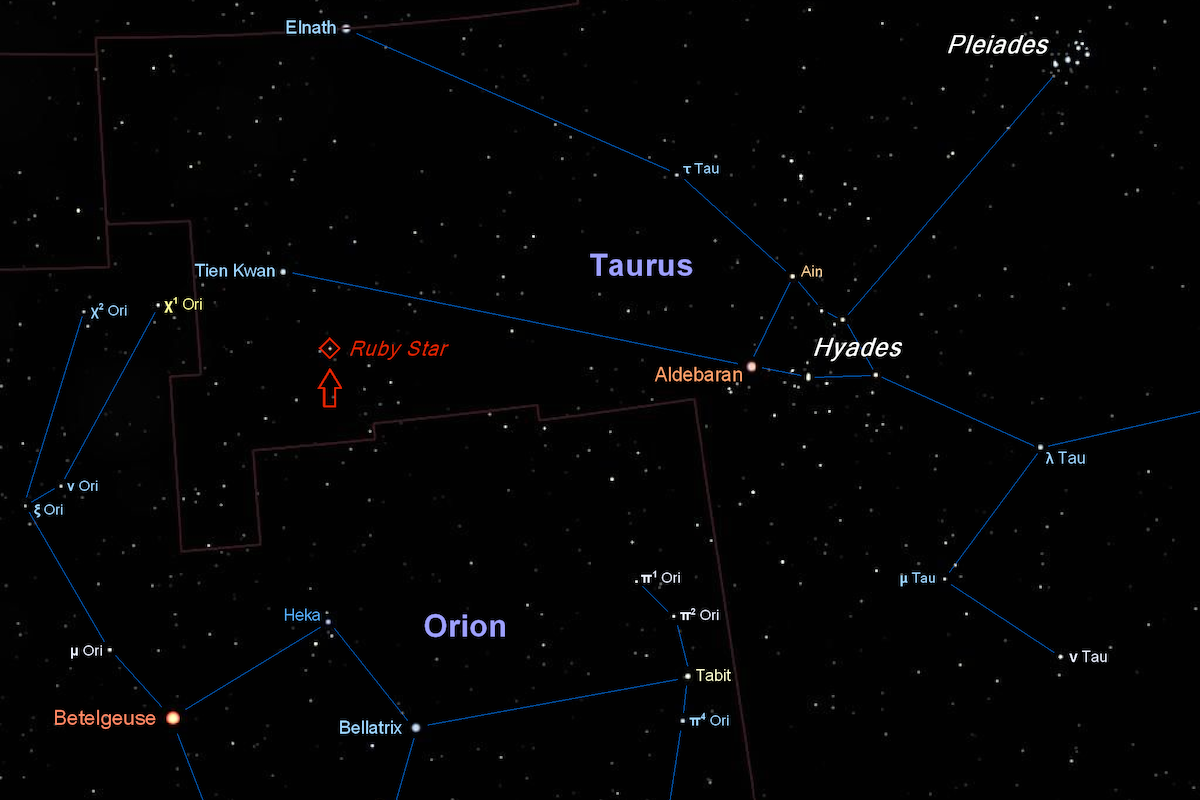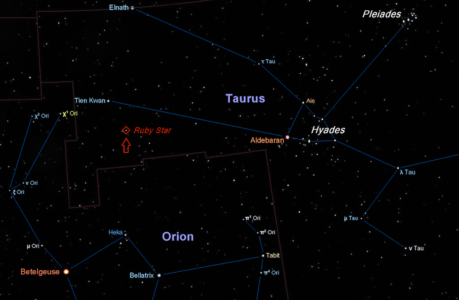The Taurus constellation is a celestial beauty that has fascinated stargazers for centuries. This magnificent group of stars is visible from all around the world, including Ireland. Located between Aries and Gemini, Taurus is one of the oldest and most recognized constellations in the night sky.
In this article, we’ll explore the Taurus constellation and provide tips on the best times to view it from Ireland. We’ll also delve into the mythology behind its name and the many legends that have been inspired by this awe-inspiring constellation.
When to View Taurus from Ireland
The best time to view the Taurus constellation from Ireland is during the winter months, particularly in December and January. During this time, Taurus is at its highest point in the sky, making it easier to spot. Look towards the eastern horizon after sunset and you’ll see a V-shaped cluster of stars that represent the bull’s head.
One of the most remarkable features of Taurus is the bright red star, Aldebaran. This star is located at the eye of the bull and is one of the brightest stars in the night sky. During the winter months, Aldebaran is particularly prominent, making it easy to locate the Taurus constellation.
Exploring the Mythology of Taurus
The Taurus constellation has a rich mythology that dates back to ancient times. In Greek mythology, Taurus is said to represent the bull that was sent by Zeus to abduct Europa, a beautiful princess. According to the legend, Zeus transformed himself into a white bull and convinced Europa to climb onto his back. He then carried her away to the island of Crete, where she became the queen.
Another legend associated with Taurus is the story of the slaying of the bull by Hercules. This myth tells of a ferocious bull that was terrorizing the island of Crete. Hercules was tasked with capturing the beast and succeeded in doing so by wrestling it to the ground. This story has been retold in many different forms throughout history and is still celebrated today in many cultures.
The Beauty of Taurus
One of the most captivating aspects of the Taurus constellation is its stunning beauty. With its V-shaped cluster of stars and its bright red star, Aldebaran, Taurus is a sight to behold. Its position in the night sky makes it a popular target for astronomers and stargazers alike.
If you’re lucky enough to view Taurus from a dark sky location in Ireland, you’ll be treated to a stunning display of stars that will leave you awestruck. From the bull’s head to the tip of its horns, the Taurus constellation is a true wonder of the night sky.
In conclusion, the Taurus constellation is a magnificent group of stars that has captured the imagination of people for centuries. From its rich mythology to its stunning beauty, Taurus is a sight to behold. So, grab your binoculars and head out to a dark sky location in Ireland this winter to view this magnificent constellation for yourself. You won’t be disappointed!
How can I see the constellation of Taurus from Ireland?
To see the constellation of Taurus from Ireland, you need to first locate it in the night sky. Here are the steps you can follow to find Taurus:
- Find a dark location: Look for a place away from city lights, where the sky is darker. This will make it easier to see stars.
- Look towards the east: After sunset, look towards the eastern horizon. Taurus rises in the east and moves across the sky during the night.
- Look for the V-shaped cluster of stars: Taurus is represented by a V-shaped cluster of stars, which is the bull’s head. You can use the bright star Aldebaran, located at the tip of the V, as a reference point.
- Locate Aldebaran: Aldebaran is a bright, reddish star and is one of the brightest stars in the night sky. It’s located at the eye of the bull and is easily visible.
- Follow the horns: The horns of the bull extend from the head and form a curve. Follow the curve to see the rest of the constellation.
If you’re having trouble finding Taurus, try using a star chart or a stargazing app on your phone to help you locate it. Also, be patient and allow your eyes to adjust to the darkness, as it takes some time to fully see the stars. With some practice and patience, you’ll be able to locate and appreciate the beauty of the Taurus constellation from Ireland.
The mythology of the constellation of Taurus
The Taurus constellation has a rich mythology that dates back to ancient times. In Greek mythology, Taurus is said to represent the bull that was sent by Zeus to abduct Europa, a beautiful princess.
According to the myth, Zeus transformed himself into a white bull and convinced Europa to climb onto his back. He then carried her away to the island of Crete, where she became the queen. In some versions of the myth, Europa is seduced by the beauty of the bull and willingly climbs onto its back.
In honor of this myth, Taurus is sometimes referred to as the “Bull of Europa” or “Europa’s Bull”. The image of the bull is often associated with strength, power, and fertility, and it has been worshipped in many cultures throughout history.
Another legend associated with Taurus is the story of the slaying of the bull by Hercules. This myth tells of a ferocious bull that was terrorizing the island of Crete. Hercules was tasked with capturing the beast and succeeded in doing so by wrestling it to the ground.
In some versions of the myth, the bull is said to have been sent by Poseidon, the god of the sea, to punish the people of Crete. In others, the bull is a symbol of the island itself and is worshipped as a sacred animal.
The myth of the slaying of the bull by Hercules has been retold in many different forms throughout history and is still celebrated today in many cultures. In Spain, for example, the running of the bulls is a popular event that takes place during the festival of San Fermin in Pamplona.
In addition to these myths, Taurus is also associated with other legends and stories in different cultures around the world. For example, in ancient Egypt, the bull was a symbol of strength and fertility and was worshipped as the god Apis. In Hindu mythology, the bull is associated with the god Shiva and is a symbol of strength and virtue.
Overall, the mythology of Taurus is a testament to the enduring power of this magnificent constellation. Whether viewed as a symbol of strength and power or as a reminder of the enduring power of the gods, Taurus is a captivating and awe-inspiring sight in the night sky.
The Stars in the constellation ofTaurus
The Taurus constellation is home to many stars, some of which are very bright and easily visible to the naked eye. Here are some of the most notable stars in the Taurus constellation:
Aldebaran is the brightest star in Taurus and is located at the eye of the bull. It is an orange giant star that is over 40 times larger than the Sun and is located about 65 light-years away from Earth.
Elnath is the second-brightest star in Taurus and is located at the tip of the bull’s northern horn. It is a binary star system, meaning that it is composed of two stars that orbit around a common center of mass.
Zeta Tauri is a double star system located in the head of the bull. It is composed of two blue-white stars that orbit around each other every 133 years.
Beta Tauri is a binary star system located in the bull’s shoulder. It is composed of two stars that orbit around each other every 160 years.
Theta Tauri is a multiple star system located in the bull’s chest. It is composed of four stars that orbit around each other every 1,500 years.
Gamma Tauri is a double star system located in the bull’s hoof. It is composed of two stars that orbit around each other every 98 years.
In addition to these stars, the Taurus constellation is also home to many other deep-sky objects, such as the Pleiades star cluster, the Crab Nebula, and the Hyades star cluster. The Pleiades, also known as the Seven Sisters, is one of the most well-known star clusters in the night sky and is visible to the naked eye as a fuzzy patch of stars. The Crab Nebula is a supernova remnant located in the bull’s horn and is visible through a telescope as a faint cloud of gas and dust. The Hyades star cluster is located near Aldebaran and is also visible to the naked eye as a cluster of stars.
Deep sky objects visible in the Constellation of Taurus
The constellation of Taurus is home to several notable deep sky objects that are visible to stargazers with the aid of telescopes or binoculars. Here are some of the most popular deep sky objects in Taurus:
The Pleiades (M45) also known as the Seven Sisters, is a bright open star cluster located in the bull’s shoulder. It is visible to the naked eye and is a popular target for stargazers. Through binoculars or a telescope, the cluster can reveal its blue-white stars and faint nebulosity.
The Hyades (Melotte 25) is another open star cluster located in Taurus, close to the bright star Aldebaran. It is one of the closest open clusters to Earth, at a distance of about 153 light-years. The cluster is visible to the naked eye and has a distinctive “V” shape.
The Crab Nebula (M1) is a supernova remnant located in the horn of the bull. It was created by a supernova explosion that was observed by Chinese astronomers in 1054. Today, the nebula is a fascinating object to observe through a telescope, appearing as a fuzzy, crab-like shape.
NGC 1746 is an open star cluster located in the bull’s horn. It is a relatively young cluster, estimated to be around 90 million years old. Through a telescope, the cluster appears as a dense grouping of stars, surrounded by faint nebulosity.
Hind’s Variable Nebula (NGC 1555) is a reflection nebula located near the star T Tauri in Taurus. The nebula’s brightness changes over time, depending on the variable star’s activity. It is a challenging object to observe, requiring a telescope and good sky conditions.
Overall, the constellation of Taurus offers a wealth of deep sky objects for stargazers to explore. Whether observing bright star clusters or faint nebulas, Taurus provides a rich and rewarding experience for those interested in exploring the wonders of the universe.

